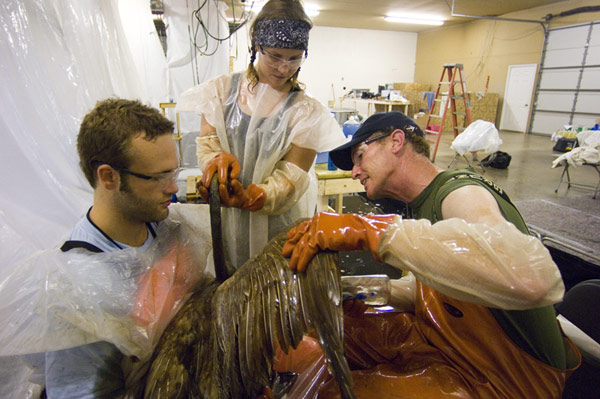We have much more to do and your continued support is needed now more than ever.
BREAKING: Enbridge Tar Sands Pipeline Accident in Minnesota
Well, that didn’t take long: Just weeks after ExxonMobil’s Pegasus pipeline spilled hundreds of thousands of gallons of sludge and wreaked havoc in Arkansas, an Enbridge pipeline has sprung a leak near Viking, Minnesota.
Fortunately for Viking residents and the area’s wildlife, it appears that this accident was contained before it became a full-blown disaster like the one in Arkansas: even so, around 600 gallons of oil are estimated to have contaminated the area. The line that burst goes by the boring-by-design name “Line 2,” but the adjoining “Alberta Clipper” pipeline is also a crucial element of this story. DeSmogBlog has more:
The Viking pump station also receives oil from the Alberta Clipper (aka Line 67 pipeline) that carries heavy crude oil and tar sands bitumen from the Alberta tar sands region south from Hardisty to Superior, Wisconsin and refineries in the midwestern United States. It is unclear whether the product that spilled was tar sands-derived diluted bitumen.

The Alberta Clipper is already enormous — carrying nearly 20 million gallons daily to Midwest refineries — but it’s currently under review for a truly giant expansion that would double its capacity and make it the biggest tar sands pipeline in the United States. That’s right — bigger than Keystone 1, Keystone XL, or the Northeast pipeline, capable of pumping 37 million gallons of tar sands oil every day through the Great Lakes region.
You may be asking yourself, “Enbridge, huh? Why is that name so familiar?” Let’s just say this isn’t the company’s first brush with fame: while producing our report Importing Disaster, we discovered that Enbridge was responsible for more than 800 spills in the US and Canada between 1999 and 2010, totaling almost seven million gallons of oil. The biggest of these, of course, was the Kalamazoo River disaster in 2010, when a pipeline linked to the Alberta Clipper burst and sent over a million gallons of tar sands coursing through the community of Marshall, Michigan. That cleanup effort has taken almost three years and nearly a billion dollars, but the Environmental Protection Agency says that it’s still not finished and recently told Enbridge to get back to work to dredge more oil out of the river.
As NWF’s Beth Wallace has detailed, Enbridge isn’t particularly interested in improving its safety record:
Rather than focus on safety and cleanup, Enbridge is recklessly moving ahead with plans to expand their pipeline network in the Great Lakes region and the Northeast, and to double down on high carbon fuel that is proving nearly impossible to clean from Michigan’s waters.
With this latest leak on their resume, it’s fair to ask what more the company can do to earn anything but a slap on the wrist. A good first step would be for the US State Department (the agency in charge of the Alberta Clipper permit) to broaden their study to Enbridge’s entire Great Lakes pipeline system, because expanding Alberta Clipper means that whole system will be exposed to a massive increase in oil volumes — and with it, an even higher chance of disaster.
![]() Hundreds of species were imperiled the last time an Enbridge pipeline burst in the Great Lakes, and we can’t afford a repeat. Speak up for wildlife threatened by Enbridge’s Midwest expansion plans — tell the State Department to stop Alberta Clipper!
Hundreds of species were imperiled the last time an Enbridge pipeline burst in the Great Lakes, and we can’t afford a repeat. Speak up for wildlife threatened by Enbridge’s Midwest expansion plans — tell the State Department to stop Alberta Clipper!
Learn more about the Enbridge pipeline boom at NWF.org.





















